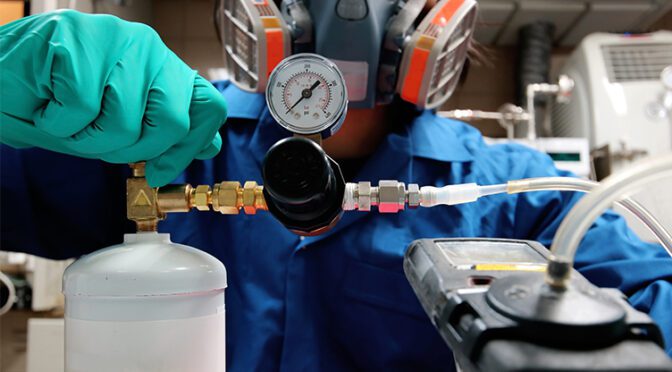- +91 9894 7742 22
- Info@shloklabs.com
In the oil and gas industry, safety and compliance are non-negotiable. From offshore rigs to storage tanks, inspections are the first line of defense against catastrophic accidents. Whether it’s an LPG inspection, pipeline leak detection system, or routine asset check, rigorous inspections help detect risks early, ensure compliance, and protect workers and the environment.
But traditional inspection methods are no longer enough. Manual inspections and stationary sensors bring limitations – blind spots, human error, and inefficiencies that today’s oil companies cannot afford. As global energy demand grows, organizations must adopt smarter, digital-first approaches to inspections.

Yes. Across all major markets, gas inspections are legally required. Regulatory bodies like OSHA (U.S.), EPA, and the European Union’s Seveso Directive mandate strict inspection frameworks. At the global level, standards from the American Petroleum Institute (API) and International Association of Oil & Gas Producers (IOGP) set industry-wide benchmarks.
Depending on the operation, inspections vary in scope and frequency:
These inspection types form the backbone of compliance and risk management across the energy and gas sector.
How often should gas inspections be carried out? Regulations differ across geographies, but industry best practices suggest:
By maintaining clear inspection schedules, oil companies minimize downtime, prevent hazards, and ensure regulatory readiness.

Despite decades of reliance, traditional inspection methods reveal serious gaps in today’s energy and gas landscape:
As the industry expands, these limitations highlight the urgency of modern, technology-driven solutions.
Ignoring inspections is not an option for the oil & gas sector. The risks include:
In short, skipping inspections is far costlier than investing in preventive measures.
Digital inspection platforms like Pro-Inspector are reshaping the way the oil & gas sector manages compliance. Instead of relying on paper checklists and scattered data, organizations can digitize every step of the inspection lifecycle.
For the oil company investing in efficiency, these benefits translate into reduced costs, stronger compliance, and better preparedness for audits.
Pro-Inspector empowers oil and gas companies with tools to streamline inspections and asset management:
Pro-Inspector covers a wide range of gas inspections, including:
This breadth ensures compliance and risk mitigation across all areas of the oil & gas ecosystem.
While the broader gas inspection landscape makes up the bulk of this story, the Bureau Veritas case study illustrates how digital tools deliver impact at scale.
Founded in 1828, Bureau Veritas is a global leader in testing and inspection services with more than 26,000 employees across 140 countries. With decades of experience in LPG inspections and cargo testing, the company supports refineries, marine operators, and pipeline managers worldwide.
Despite its global presence, Bureau Veritas faced challenges:
Bureau Veritas deployed Gas Inspector by Pro-Inspector – a mobile-first platform digitizing the full inspection cycle.
Results included:
This real-world example underscores the value of digital transformation in oil and gas inspections empowering leaders in the petroleum industry to stay compliant, efficient, and scalable.
Gas inspections are not optional – they are mandatory and vital for the safety of people, assets, and the environment. For oil and gas companies, traditional methods are no longer sufficient. As pipeline leak detection systems, gas leak detection, and compliance demands grow more complex, adopting digital inspection tools is the only sustainable path forward.
By digitizing inspections, organizations can protect workers, prevent accidents, and optimize resources across oil fields, refineries, and energy hubs. With industry leaders like Bureau Veritas already embracing the change, the future of energy and gas safety lies in smarter, technology-driven inspections.
Also Read: Vendor Audits Explained: Importance, Process, and Best Practices
